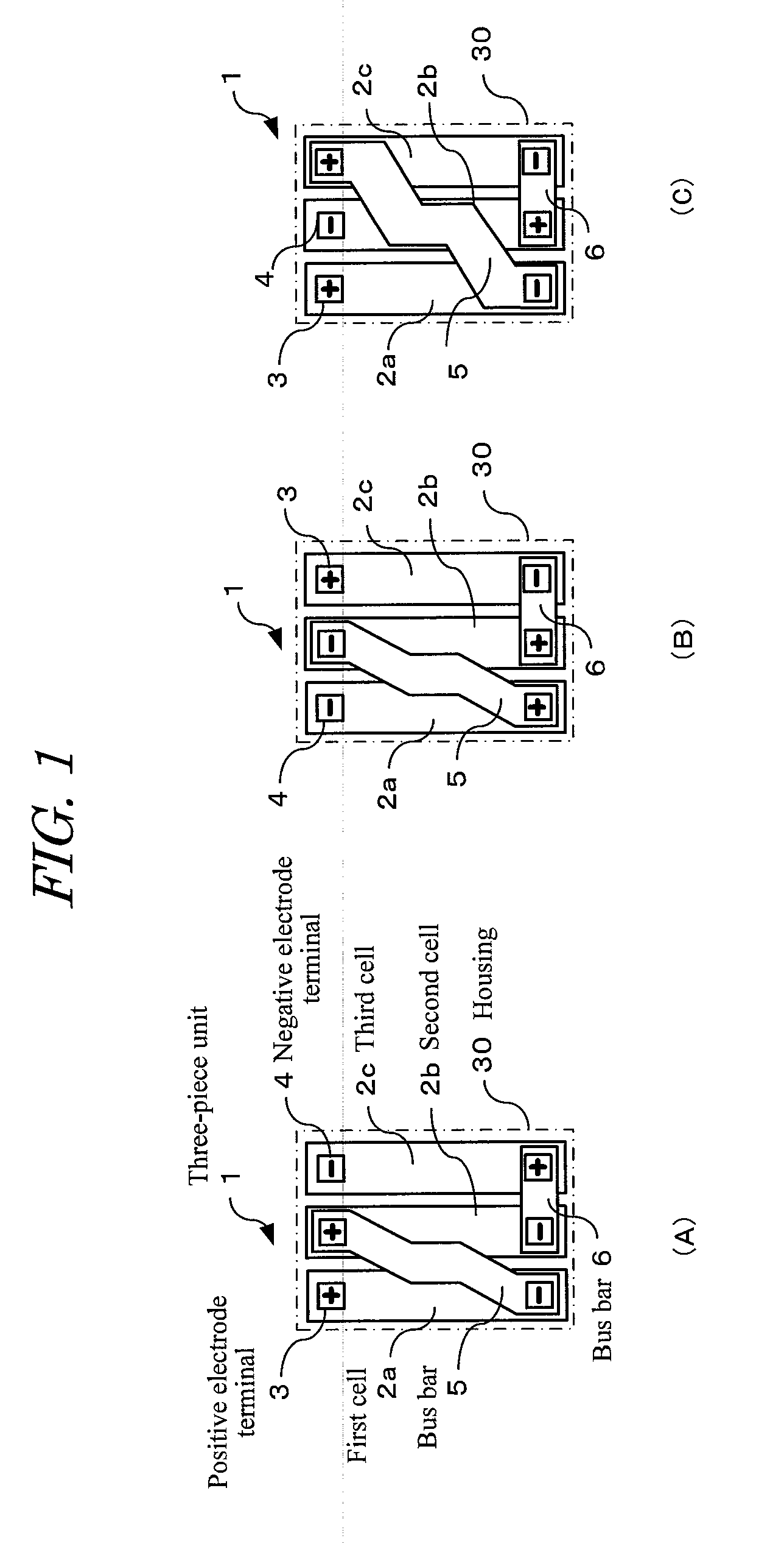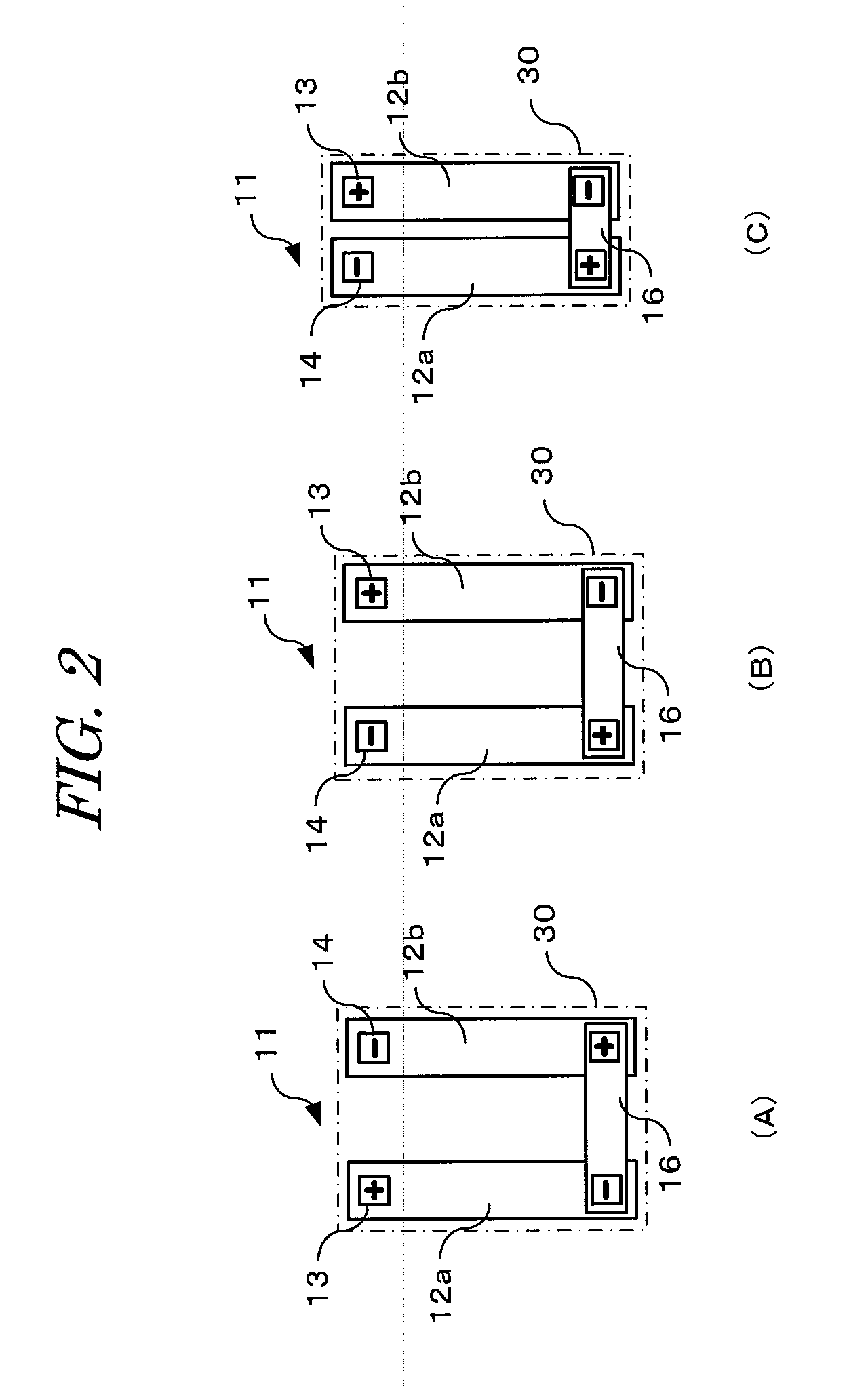Battery pack
a battery pack and battery technology, applied in the field of batteries, can solve the problems of low workability in connecting individual battery cells, affecting the efficiency of battery cell connection, and reducing the volumetric efficiency of long wires, so as to improve the efficiency of connecting a large number of cells
- Summary
- Abstract
- Description
- Claims
- Application Information
AI Technical Summary
Benefits of technology
Problems solved by technology
Method used
Image
Examples
first embodiment
1. First Embodiment
[0031]A first embodiment of the present invention is described hereinafter in detail with reference to FIGS. 1 to 3.
[0032]FIG. 1(A) shows a three-piece unit 1 of a battery pack of the present embodiment. In this three-piece unit 1, three pieces of flat-plate cells 2a to 2c are arranged in parallel along the longitudinal direction thereof, and a positive electrode terminal 3 and negative electrode terminal 4 are provided at the top of each of the cells 2a to 2c. In this case, in the first and second cells 2a, 2b the positive electrode terminals 3 and the negative electrode terminals 4 are arranged in the same direction, and in the third cell the positive electrode terminal 3 and the negative electrode terminal 4 are arranged in direction opposite to each other.
[0033]The negative electrode terminal 4 of the first cell 2a and the positive electrode terminal 3 of the second cell 2b are connected with each other by an internal connection bus bar 5 disposed in an obliqu...
second embodiment
2. Second Embodiment
[0040]In FIG. 4, in addition to the three-piece unit 1 and the two-piece unit 11 shown in FIGS. 1 and 2, a different type of three-piece unit 1′ and different type of two-piece unit 11′ that are similarly configured by storing three or two cells in the housing 30 are used for connecting ten cells in series.
[0041]In this embodiment, as with the three-piece unit shown in FIG. 1, the three-piece unit 1′ has the oblique bus bar 32 for connecting the positive electrode terminal with the negative electrode terminal in each of adjacent cells. However, this bus bar 32 is not an internal connection bus bar for connecting the cells of the unit beforehand, but an external connection bus bar that connects the positive electrode terminal and the negative electrode terminal of the cell exposed from the housing 30, from the outside of the housing 30. In this three-piece unit 1′, the positive electrode terminal and the negative electrode terminal of each of the three cells are e...
PUM
| Property | Measurement | Unit |
|---|---|---|
| length | aaaaa | aaaaa |
| voltage | aaaaa | aaaaa |
| thickness | aaaaa | aaaaa |
Abstract
Description
Claims
Application Information
 Login to View More
Login to View More - R&D
- Intellectual Property
- Life Sciences
- Materials
- Tech Scout
- Unparalleled Data Quality
- Higher Quality Content
- 60% Fewer Hallucinations
Browse by: Latest US Patents, China's latest patents, Technical Efficacy Thesaurus, Application Domain, Technology Topic, Popular Technical Reports.
© 2025 PatSnap. All rights reserved.Legal|Privacy policy|Modern Slavery Act Transparency Statement|Sitemap|About US| Contact US: help@patsnap.com



